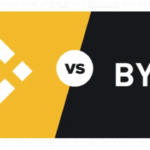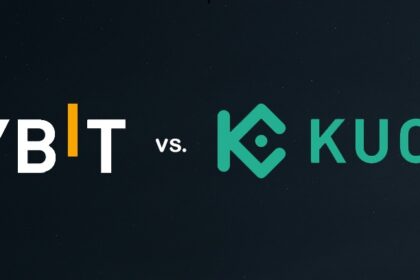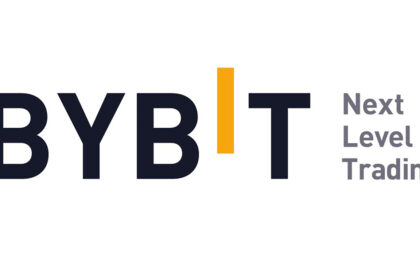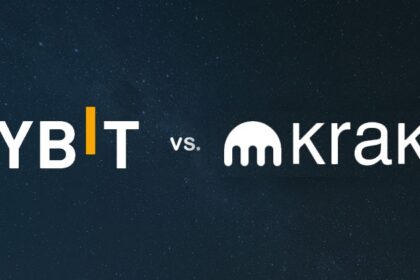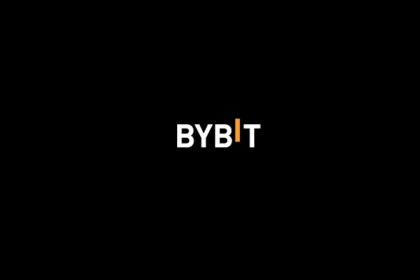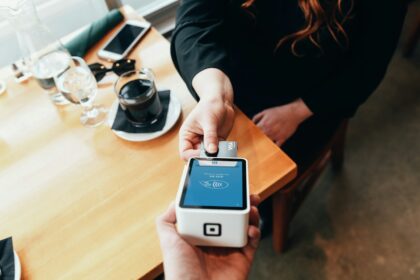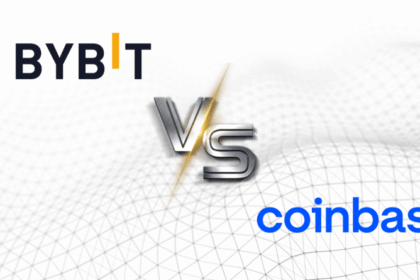Welcome to the world of cryptocurrency trading. It can seem complex, but some tools can make it very exciting. One of these tools is crypto futures trading. This guide will help you understand what it is and how to find the best crypto futures trading platform for your needs. We will explain things simply, so you can feel confident.
This article is long and detailed. We will cover everything from the basics to advanced features. We want you to have all the information to make a good choice. We will also talk about some of the top platforms in the market.
What are crypto futures?
Let’s start with the basics. What is a “futures contract”?
Imagine you are a farmer. You grow wheat. You worry that by the time you harvest your wheat, the price will drop. A baker worries that the price of wheat will go up. So, you and the baker make a deal. You agree to sell your wheat to the baker in three months at a fixed price, let’s say $100. The baker agrees to buy it for $100. This deal is a futures contract.
In cryptocurrency, it works the same way, but with digital assets like Bitcoin (BTC) or Ethereum (ETH). You are not trading the actual coins. Instead, you are trading a contract to buy or sell a crypto asset at a specific price on a future date.
There are two main things you can do:
- Going Long: You believe the price of Bitcoin will go up. You buy a futures contract, agreeing to buy Bitcoin at today’s price in the future. If the price goes up, your contract becomes more valuable.
- Going Short: You believe the price of Bitcoin will go down. You sell a futures contract, agreeing to sell Bitcoin at today’s price in the future. If the price drops, you can buy Bitcoin at the new, lower price to fulfill your contract, and you make a profit.
What is leverage in futures trading?
This is the most important, and most dangerous, part of futures. Leverage is like borrowing money from the exchange to make a bigger trade.
Let’s say you have $100. The platform offers 10x leverage. This means you can open a trade (a “position”) worth $1,000 (10 times your $100). Your $100 is called the “margin” or “collateral”.
- The Good Part: If the price moves in your favor by 5%, your $1,000 position is now worth $1,050. Your profit is $50. You made a 50% profit on your original $100!
- The Bad Part: If the price moves against you by 5%, your $1,000 position is now worth $950. Your loss is $50. You lost 50% of your original $100.
If the price moves against you by 10% (with 10x leverage), your $1,000 position loses $100. This is your entire deposit. The exchange will automatically close your position and take your $100 to cover the loss. This is called liquidation. You lose everything you put into that trade.
Platforms can offer 20x, 50x, or even 100x leverage. The higher the leverage, the higher the risk. A tiny price move can wipe out your entire investment. Beginners should always start with very low leverage (like 3x or 5x) or no leverage at all.
What to look for in a futures platform
Choosing the right platform is crucial. It’s like choosing the right car for a race. You need one that is fast, safe, and reliable. Here are the key features to check.
1. Security and trust
This is the most important factor. If the platform gets hacked or goes bankrupt, you could lose all your money. Look for platforms that have:
- Two-Factor Authentication (2FA): This adds an extra layer of security to your account, usually a code from your phone.
- Cold Storage: This means the platform keeps the majority of its users’ crypto in offline wallets, safe from hackers.
- Proof of Reserves (PoR): This is an audit that proves the platform actually holds all the customer funds it claims to.
- Insurance Fund: A special fund set aside to cover losses if the system fails or in cases of extreme market volatility.
Never trade on a platform that does not take security seriously. Your funds are your responsibility, but the platform must provide the tools to protect them.
2. Trading fees
Fees can eat into your profits, especially if you trade often. There are two main types of fees:
- Maker Fee: You are a “maker” if you place an order that doesn’t fill immediately. You are *adding* liquidity (options) to the market. Maker fees are often very low, or even zero. Some platforms even pay you a “rebate” for being a maker.
- Taker Fee: You are a “taker” if you place an order that fills instantly at the current market price. You are *taking* liquidity from the market. Taker fees are higher than maker fees.
Also, look at funding rates. In futures (specifically “perpetual futures”), these are small payments exchanged between long and short traders every few hours to keep the contract price in line with the actual crypto price. If you hold a position open, you will either pay or receive this fee.
A good platform has low, transparent fees. A great platform, like Bybit, offers some of the most competitive fees in the industry.
3. Liquidity and trading volume
Liquidity is a big word for a simple idea: how easy is it to buy or sell something quickly without affecting its price?
A platform with high liquidity has many buyers and sellers. This is good for two reasons:
- Tight Spreads: The “spread” is the tiny difference between the highest buy price and the lowest sell price. A tight spread means you get a better, fairer price.
- Low Slippage: “Slippage” happens when you place a large order, but the price changes before your order is completely filled. You end up getting a worse price than you expected. High liquidity prevents this.
You want a platform with high trading volume. This shows that many people trust it and that you will always be able to enter or exit a trade when you want to.
4. User interface (UI) and user experience (UX)
The platform should be easy to use. A confusing or slow platform can cause you to make expensive mistakes. When you are trading with leverage, every second counts. You do not want to be fighting with the website.
Look for:
- A clean, clear layout.
- A fast trading engine that does not freeze or “overload” during busy market times.
- Advanced features for pro traders (like different order types) but also a simple mode for beginners.
- A good mobile app so you can manage your trades on the go.
5. Customer support
When money is on the line, you need help fast. Crypto markets are open 24/7, so your platform’s support should be too. Look for 24/7 live chat support. Email support that takes 3 days to reply is not good enough when you have a problem with an open position.
6. Available trading pairs
Does the platform only offer Bitcoin? Or does it have many different altcoins? If you only want to trade BTC and ETH, a simple platform is fine. If you want to trade newer, smaller coins, you will need a platform with a wider selection. However, be aware that smaller coins are often much riskier and have lower liquidity.
Ready to Start Trading Futures?
Join Bybit, one of the world’s leading crypto futures platforms. Known for its speed, reliability, and low fees.
Use our special referral codes for amazing welcome bonuses, including deposit rewards and fee discounts!
Global Users (Non-EU): BYBIT31
EU Users: BYBIT3K
Top contenders for the best crypto futures platform
Now that we know what to look for, let’s look at some of the most popular platforms. The “best” one often depends on your personal needs. Are you a beginner? Are you an advanced trader? Do you live in the EU or elsewhere?
In-depth look: Bybit
Bybit is often at the top of any list for futures trading, and for good reason. It was built specifically for derivatives trading (like futures) and excels in this area. It has grown massively to become a full crypto ecosystem, but its futures product remains world-class.
Our in-depth Bybit Review starts with its core strength: the trading engine. Bybit boasts an engine that can handle 100,000 transactions per second (TPS). This is extremely fast. What does this mean for you? It means that even during a massive market crash or spike, the platform does not overload. Your orders go through instantly. Many other exchanges freeze during high volatility, causing traders to lose millions. Bybit was built to avoid this.
Bybit fees
Bybit’s fees are very competitive. They use a maker-taker model which rewards traders who add liquidity. For derivatives, the fees are typically:
- Maker Fee: 0.02% (or lower for high-volume traders)
- Taker Fee: 0.055% (or lower)
These are very low and attractive for active traders. They also have a VIP program that lowers these fees even further as your trading volume increases.
Security and reliability
Bybit has an excellent security record. They use a multi-signature cold wallet system to store the vast majority of user funds. This means funds are offline, and multiple keys are needed to access them, making them safe from hackers. They also have a robust insurance fund to protect users.
User experience
The platform is clean and powerful. It has all the advanced charting tools (from TradingView) that professional traders need. At the same time, its layout is intuitive, and the mobile app is one of the best available. You can easily set stop-loss and take-profit orders, manage your positions, and trade on the go.
Bybit Global vs. Bybit EU
A key point to note is that Bybit now operates different services based on location. To comply with regulations, they have Bybit Global (for users outside the EU) and a separate platform for users in the European Union (like the Netherlands, Germany, Poland, etc.). The EU platform is fully regulated and licensed, offering peace of mind, though it may have slightly different product offerings to comply with local laws (e.g., leverage limits might be different).
This is why we provide two separate links and codes:
- Bybit Global (Non-EU) Referral Code: Use BYBIT31 to get access to the best welcome bonuses, potentially up to $30,000 in rewards based on your deposits and trading volume.
- Bybit EU Referral Code: Use BYBIT3K. This code is specifically for users in the European Union and will give you the best available bonuses for that region, such as trading fee discounts and new user rewards.
This Bybit Review wouldn’t be complete without mentioning their customer support. They offer 24/7 live chat in multiple languages, and responses are generally very fast and helpful.
When comparing platforms in any Bybit Review, you’ll often see liquidity and engine speed as key metrics where Bybit consistently scores at the very top. It is built for serious traders but remains accessible for new users who are willing to learn.
Trade with Confidence on Bybit
Experience a blazing-fast trading engine that never overloads. Join millions of users who trust Bybit for their futures trading.
Sign up today and claim your new user rewards. Remember to use the correct code for your region!
Global Code: BYBIT31 |
EU Code: BYBIT3K
Contender 2: Binance
You cannot talk about crypto trading without mentioning Binance. It is the world’s largest cryptocurrency exchange by trading volume. Its size is its biggest advantage.
Because it is so large, it has the highest liquidity in the market. It also has the largest selection of trading pairs. If a new, popular coin exists, Binance Futures will probably list it first. Their fees are also very low, and can be made even lower if you hold their native coin, BNB.
However, Binance’s size has also made it a major target for regulators. It has faced legal challenges in many countries, which can create uncertainty. For beginners, the platform can also be overwhelming. There are so many features, products, and options that it can be hard to know where to start. A key takeaway from this Bybit Review is its focus on a stable trading engine, whereas Binance has, in the past, suffered from overload issues during extreme volatility, though they have worked to improve this.
Register on Binance and get bonus!
Contender 3: OKX
OKX (formerly OKeX) is another top-tier exchange that competes directly with Bybit and Binance. It is a very strong all-rounder, offering a powerful trading platform, a wide range of assets, and innovative features. Many professional traders like OKX for its reliability and advanced order types.
OKX also puts a strong emphasis on Proof of Reserves (PoR), regularly publishing reports to show that user funds are safe and fully backed. Their trading interface is clean and highly customizable. They also have a “simple” mode for beginners, which is a nice touch. Their fee structure is similar to Bybit and Binance, with low maker/taker fees that decrease with higher trading volume. We continue our Bybit Review by looking at the mobile app; Bybit’s app is often rated as slightly more intuitive, but OKX’s app is also very robust and full-featured.
Why Choose Bybit?
Unmatched reliability, 24/7 customer support, and a platform built for performance. Bybit is the professional’s choice for futures trading.
Don’t forget to use the referral code for your region to get the best start!
Global Users (Non-EU): BYBIT31
EU Users: BYBIT3K
Contender 4: Kraken Futures
Kraken is one of the oldest and most respected exchanges in the world, especially popular in the United States and Europe. Its main platform is known for being very secure and easy for beginners. They also have a separate, more advanced platform called Kraken Futures.
The main advantage of Kraken is trust and regulation. They are heavily regulated and have a fantastic security record. If you are a trader who prioritizes safety and regulatory compliance above all else, Kraken is an excellent choice. Compared to our Bybit Review, other platforms like Kraken may feel a bit simpler. The Kraken Futures interface is clean and professional, but it offers fewer altcoin pairs than Bybit, Binance, or OKX. Its liquidity is also lower, but still very good for major pairs like BTC and ETH.
Comparison of top futures platforms
Here is a simple table to help you compare the platforms at a glance. (Note: Fees are approximate and can change based on VIP level and market conditions).
Tips for beginners in futures trading
If you are new to futures, it can be very dangerous. Here are some simple tips to help you stay safe.
- Start with paper trading. Many platforms (including Bybit) offer a “testnet” or “paper trading” account. This lets you trade with fake money in the real market. You can practice your strategies without risking any real money.
- Use low leverage. It is tempting to use 100x leverage and dream of big profits. Do not. Start with 3x or 5x leverage. Even 10x is very high for a beginner. Learn how leverage works before you increase it.
- Always use a stop-loss. A “stop-loss” is an order you set to automatically close your position if the price drops to a certain level. This is your most important safety tool. It limits your potential loss. Never open a trade without a stop-loss.
- Understand liquidation. Know your liquidation price. The platform will tell you “If Bitcoin hits $X, you will be liquidated.” Pay close attention to this price.
- Do not trade with money you cannot afford to lose. This is a golden rule for all investing. Futures trading is high-risk. Assume you could lose everything you put in.
- Have a plan. Do not trade based on emotions. Have a clear plan: “I will enter at this price. I will set my stop-loss at this price. I will take profit at this price.” Stick to your plan.
The ultimate risk: Liquidation explained simply
We must talk about this one more time. Liquidation is the dark side of leverage.
Remember your $100 with 10x leverage, controlling a $1,000 position? Your $100 is your “margin”. The exchange is lending you the other $900.
If your trade goes against you by 10%, your $1,000 position loses $100. The exchange’s $900 is now at risk. The exchange will not lose its own money. So, it instantly closes your trade and takes your $100 margin to cover the loss.
You are left with $0.
With 20x leverage, you only need a 5% price move against you to be liquidated. With 50x leverage, a 2% move. With 100x leverage, a tiny 1% move will wipe you out.
This is why finding the best crypto futures trading platform is so important. A good platform like Bybit has a reliable liquidation engine. It will warn you as you get close to your liquidation price. It also has a powerful risk management system to help prevent “scam wicks” (sudden, false price spikes) from liquidating you unfairly. To conclude this Bybit Review, Bybit stands out as a top-tier choice because it was built to handle this volatility safely and reliably.
Get the Bybit Advantage
Join the next generation of traders. Use the most reliable platform with the best liquidity and 24/7 support.
Sign up with code BYBIT31 (Global) or BYBIT3K (EU) to claim your exclusive welcome rewards!
Conclusion
Choosing the best crypto futures trading platform is a critical decision. You need a blend of security, low fees, high liquidity, and a reliable trading engine. While Binance offers the most assets, its regulatory issues and past overloads can be a concern. Kraken offers great security but fewer options.
For most traders, from beginner to advanced, Bybit offers the best balance. Its specialization in futures trading means its platform is fast, stable, and reliable. You know it will work when you need it most. With competitive fees and excellent customer support, it is a top contender.
Whichever platform you choose, please remember the risks. Start small, use low leverage, and never trade money you cannot afford to lose. Good luck.
Frequently Asked Questions (FAQ)
1. What are crypto futures in simple terms?
They are contracts (agreements) to buy or sell a cryptocurrency at a fixed price on a future date. It lets you bet on whether the price will go up (going long) or down (going short).
2. Is futures trading very risky?
Yes, it is extremely risky, especially when using leverage. You can lose your entire investment very quickly. It is not recommended for beginners who have not done their research.
3. What is leverage?
Leverage is borrowing money from the exchange to open a bigger trade. For example, 10x leverage lets you control a $1,000 trade with only $100. It magnifies both your potential profits and your potential losses.
4. What is liquidation?
This is when the exchange automatically closes your leveraged trade because the market moved against you. You lose your initial deposit (your “margin”) for that trade. For example, with 10x leverage, a 10% price move against you will cause liquidation.
5. What is the best crypto futures platform for a beginner?
A good platform for beginners is one with a “paper trading” or “testnet” account, like Bybit. This lets you practice with fake money. Always start with very low (3-5x) or no leverage.
6. What is the Bybit referral code?
There are two main codes depending on your location. Use BYBIT31 for the Bybit Global platform (for users outside the EU). Use BYBIT3K if you are a user in the European Union for the Bybit EU platform.
7. What do the Bybit referral codes give me?
Using codes BYBIT31 (Global) or BYBIT3K (EU) gives you access to the best new user welcome rewards. This often includes a trading fee discount, a bonus on your first deposit, and access to special promotions where you can earn more (like a deposit bonus up to $30,000).
8. How do I use the Bybit referral code?
When you sign up for a new Bybit account, there will be a field labeled “Referral Code (Optional)”. Enter BYBIT31 or BYBIT3K in this box before you create your account. Using the links in this article (https://cyberessentials.org/go/bybit/ or https://cyberessentials.org/go/bybit_eu/) will often apply the code automatically.
9. Is Bybit available for users in the European Union (EU)?
Yes. Bybit operates a separate, regulated platform for users in the EU. You must sign up for the Bybit EU platform if you live in that region. Use the code BYBIT3K and the specific EU link (https://cyberessentials.org/go/bybit_eu/) for this.
10. What are maker and taker fees?
A “maker” is someone who places an order that doesn’t fill immediately (like a “limit order”), adding liquidity to the market. They pay a low “maker fee”. A “taker” is someone who places an order that fills instantly at the market price, taking liquidity. They pay a slightly higher “taker fee”.



